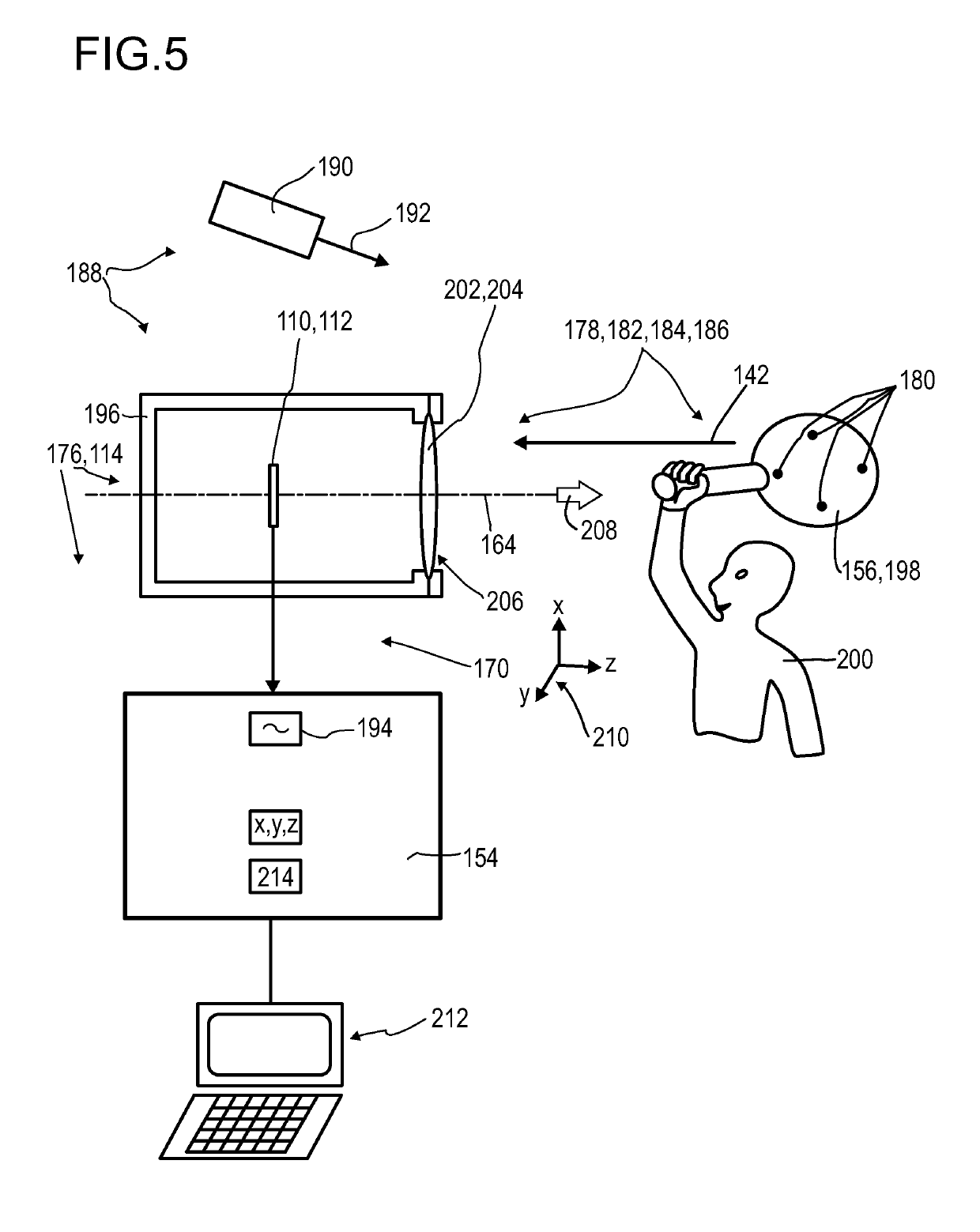Detector for optically detecting at least one object
a detector and optical detection technology, applied in the direction of instruments, sustainable manufacturing/processing, radio frequency controlled devices, etc., can solve the problems of insufficient use of large area sensors in the use of fip measurement principle, insufficient beam splitter, and inability to achieve the effect of low requirements and low technical effor
- Summary
- Abstract
- Description
- Claims
- Application Information
AI Technical Summary
Benefits of technology
Problems solved by technology
Method used
Image
Examples
Embodiment Construction
[0313]FIG. 1 shows, in a highly schematic illustration, an exemplary embodiment of a longitudinal optical sensor 110 and a transversal optical sensor 112 of a detector 114 according to the present invention. The longitudinal optical sensor 110 has a layer setup. The longitudinal optical sensor 110 may comprise at least two intrinsic semiconductor layers 118, for example a first intrinsic semiconductor layer 120 and a second intrinsic semiconductor layer 122. The longitudinal optical sensor 110 comprises at least two p-type semiconductor layers 124, for example, a first p-type semiconductor layer 126 and a second p-type semiconductor layer 128. The longitudinal optical sensor 110 comprises at least two n-type semiconductor layers 130, for example, a first n-type semiconductor layer 132 and a second n-type semiconductor layer 134. Each of the intrinsic semiconductor layers 118 may be located between one of the p-type semiconductor layers 124 and one of the n-type semiconductor layers ...
PUM
 Login to View More
Login to View More Abstract
Description
Claims
Application Information
 Login to View More
Login to View More - R&D
- Intellectual Property
- Life Sciences
- Materials
- Tech Scout
- Unparalleled Data Quality
- Higher Quality Content
- 60% Fewer Hallucinations
Browse by: Latest US Patents, China's latest patents, Technical Efficacy Thesaurus, Application Domain, Technology Topic, Popular Technical Reports.
© 2025 PatSnap. All rights reserved.Legal|Privacy policy|Modern Slavery Act Transparency Statement|Sitemap|About US| Contact US: help@patsnap.com



